April 2022: Sandhill crane migration
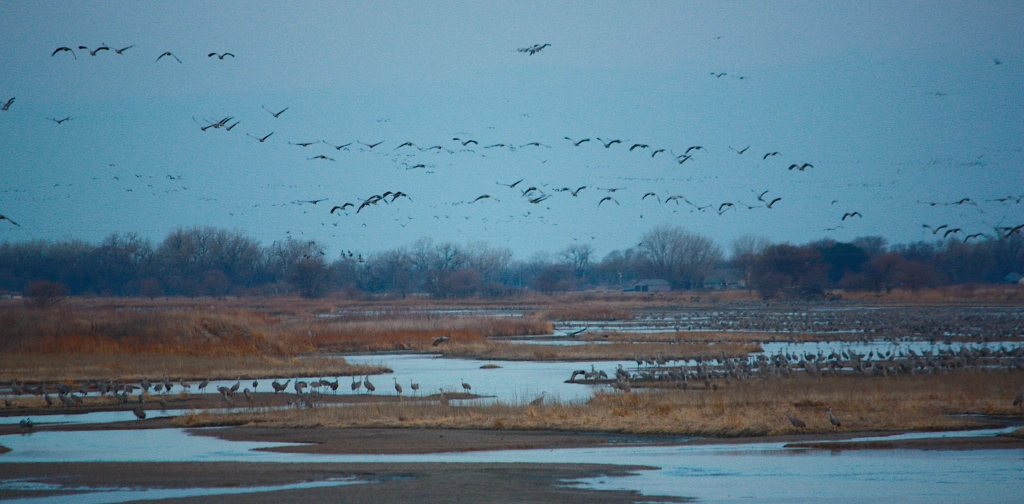
Several years ago, a story in the Des Moines Register caught my eye. “The spectacle of sandhill cranes in Nebraska is a sight to behold,” read the callout. An enormous photo, filled to the edges with graceful, dancing cranes, bore this caption: “Throughout March, more than half a million – 85 percent of the world’s population – rest and feed in rural Nebraska, only a five-hour drive west of Des Moines. They attract visitors from around the world to what is called North America’s greatest migration.”
The March 25, 2017 story, artfully written by reporter Mike Kilen, had me hooked from the beginning. The next fall, Dave and I researched our options to reserve a photographer’s blind or viewing spot at Rowe Sanctuary, generally regarded as the best place on the planet to watch the sandhill crane migration unfold the following spring.
We secured a spot for a Sunday morning at 6 a.m. The fact that the date was April 1 is not lost on me, because this adventure did not go as planned.
For our guided crane viewing experience at Iain Nicolson Audubon Center at Rowe Sanctuary, we paid $35 per person, and we reserved a hotel room in Kearney, Neb., the closest town of any size. As the weekend grew closer, the forecast was not looking great. There was a chance of snow and low of 23 on Saturday night; Sunday looked like another chance of rain and/or snow with a high of 41. But we’d already paid, so we just packed extra-warm clothes, hats, socks, and all of that and figured it would be okay.
But then, as were literally getting into the car to drive across Nebraska on Saturday morning, we checked the forecast one last time, and the “chance” of snow had turned into a blizzard warning. The entire National Weather Service forecast was covered in RED. We bailed, fully aware that our crane viewing tickets and our reservation at the Kearney Holiday Inn were not refundable this late in the game. We just couldn’t risk driving across I-80 in a blizzard – not to mention how utterly miserable we would be at 6 a.m. on the viewing platform in the snow.
Our cancellation was a disappointment (although we got full refunds due to the extreme weather conditions, which was very generous of everyone involved). But that was that.
We discussed trying again in 2019, but for whatever reason that didn’t work…and then you know what happened in March 2020.
So, it’s been a long time coming. This spring, we finally got to see the sandhill crane migration.
And you know what? It was definitely not the experience I’d been dreaming of.
Maybe I had built this up in my head too much. Maybe I’d seen too many photos taken with extremely long lenses – the kind the National Geographic photographers use to take pictures of polar bears frolicking with their cubs six miles away.
Maybe ALL the photos were taken from the Rowe Sanctuary’s photography blinds. This may be the only place to get close to the cranes. But we were unable to get a photography blind this spring, and we couldn’t even get a tour spot in the sanctuary. We decided to drive to Nebraska and take our chances with the public viewing spots.
This made for an inexpensive outing (all we spent was one night in a hotel), and it was still sort of fun. But as you can see by my pathetic photos (shot mostly with a 200mm lens) we were a very long way from the cranes.
Let me back up a bit and tell you a bit more about the crane migration, because it’s pretty extraordinary. According to a “crane watch guide” I picked up, for eight weeks from late February to early April, more than 80% of the world’s sandhill crane population converges on Nebraska’s Platte River. The cranes migrate from southern wintering grounds to northern breeding grounds in Canada, Alaska, and (get this!) Siberia. Siberia! Holy crap. Apparently they stop along the Platte to rest and gain body fat as they prepare for their long journey north.
We caught our first glimpse of the birds when we were driving across I-80. It was probably somewhere near Grand Island when we started seeing something strange out in the stubbly corn fields.
“What are those gray things?” I asked Dave. We kept an eye out for more, and the further west we drove, the more we saw, out in the distance, eating what was left of the corn harvest.
They were sandhill cranes, refueling for their lengthy migration. We started getting excited. I mean, there were thousands of birds, just happily munching away, or so it seemed.
Our plan was to check in to the hotel and then go to the Fort Kearny State Recreation area that evening. The recreation area has a biking/walking bridge over the Platte River that’s said to offer good (free) views of the migration. We were making great time, so we decided to stop at the viewing platform just so we’d know what to expect when we got back there at dusk. The view is mostly mudflats, and it’s an easy walk. Afterwards we drove into Kearney and ate an early dinner before driving back to the viewing area.
We were one of the first people to get there, but one was a professional photographer who had lots of experience photographing the birds. He said the bridge would offer us a good view, but he also said there were no guarantees.
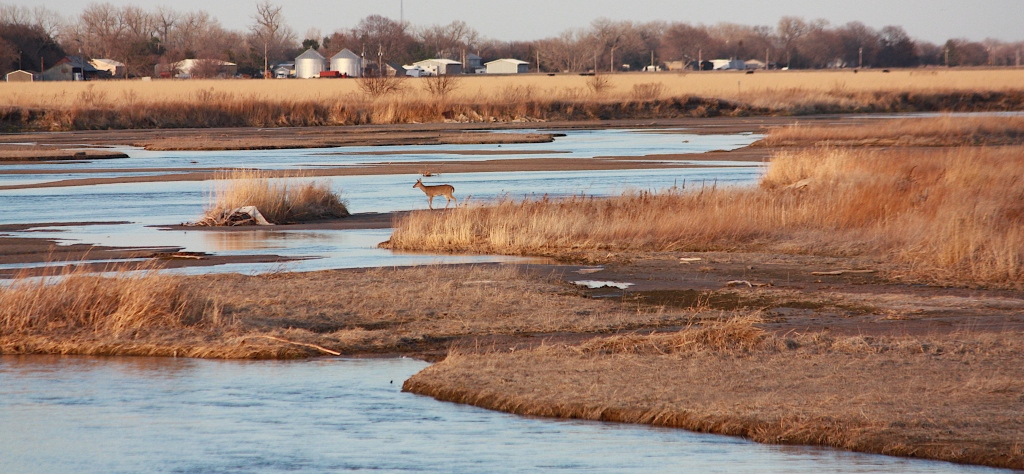
As the sky got dark, we started to see a few birds (and resident deer walking across the mud flats, above). The scene was lovely, with the sun setting to the west and huge numbers of sandhill cranes gathering and trilling. But, as I already said, the birds were not close. They did not fill my camera frame. I never even got a good look at them – they were mostly just tiny silhouettes with wings. (Can you see them in the photo below? Nope, me neither.)
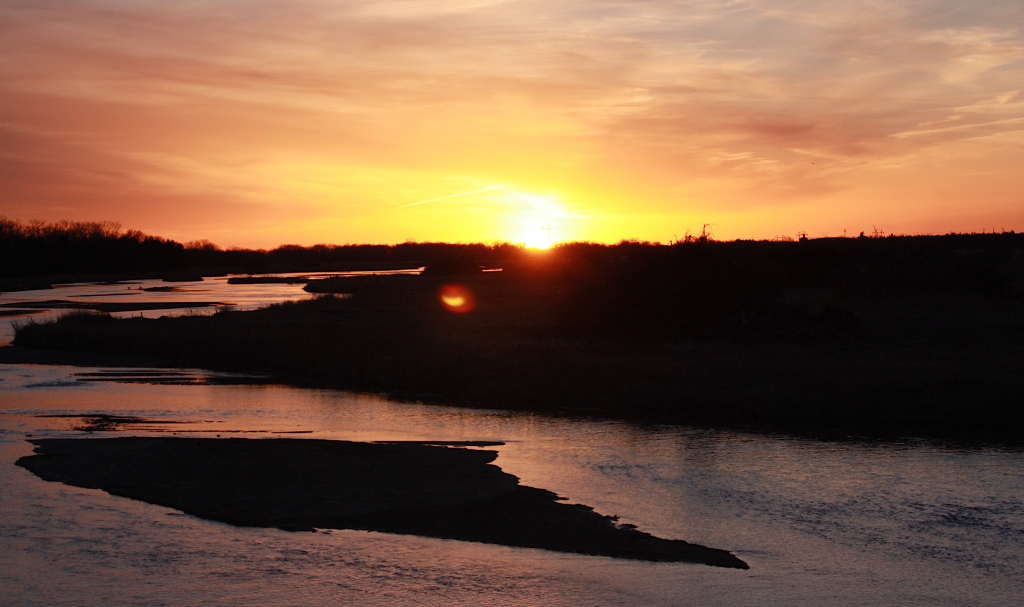
But we did get some advice that evening about another vantage point from which to see the migration. After a short night at the hotel, we got up at 5 a.m. the next morning, checked out, and drove through the dark to a tiny parking lot where there were already a few cars. As the sun started to peek out, we could see two boardwalked viewing platforms. At first, we couldn’t see the birds at all, but we could hear them. As the sky became lighter, we could hear their increasingly loud calls and then finally see them. Thousands of them were overnighting on mud flats…but too far away to see very well.
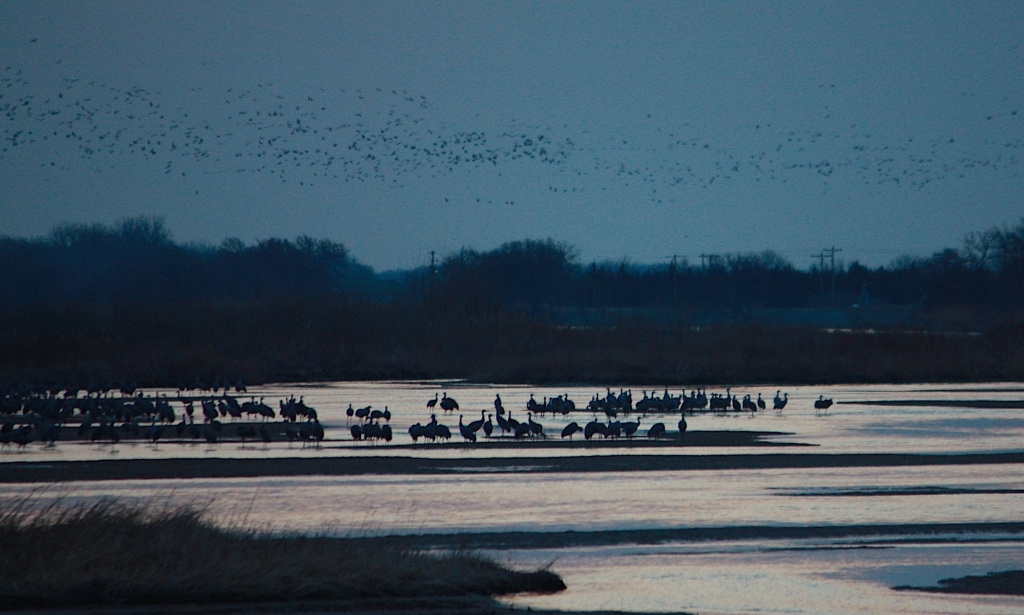
Again, it was still fun to see the sun come up and the sky fill with birds and talk to all the other weirdos doing the same thing we were. But no up-close-and-personal bird encounters. Bah!
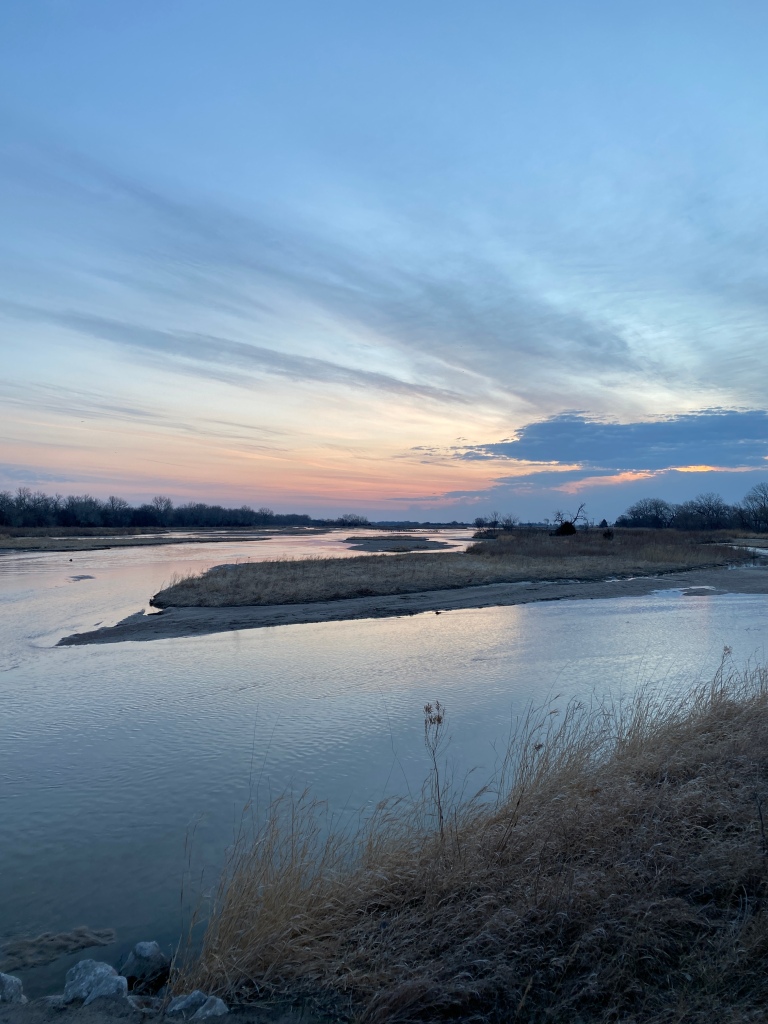
Once it became fully light, most of the birds had flown, presumably back to the corn fields, so we headed home to Ames. But here’s our one little surprise nugget: After stopping in Grand Island for breakfast at a funky diner (with great hash browns) we drove past a corn field…filled with cranes. And, unlike our sightings on I-80, these birds were very close to the road, and we found a gravel drive that allowed us to stop and park our car. We photographed them doing their morning dance, albeit not in the setting we expected, and that was sort of thrilling. They didn’t seem to like us, so the more we snapped photos, the further they moved away from us.
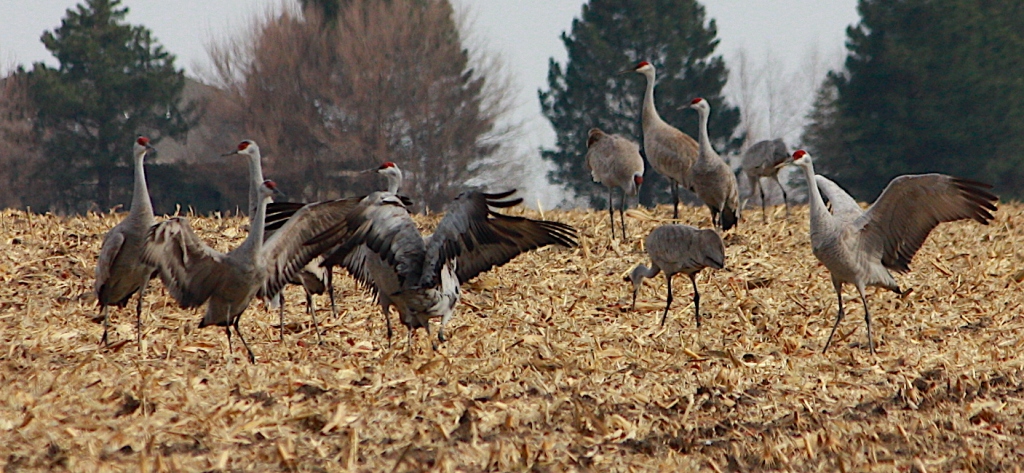
On the way back to Ames, Dave and I recapped our adventure: Yes, we were glad we had the experience. We learned a lot about what to do and what NOT to do. Would we go back? Yes, but only with a reserved photography blind – and those are hard to come by on the weekends. Perhaps, we decided, we’d try again on a weekday. After we’re retired.
This blog post was such an amazing help!